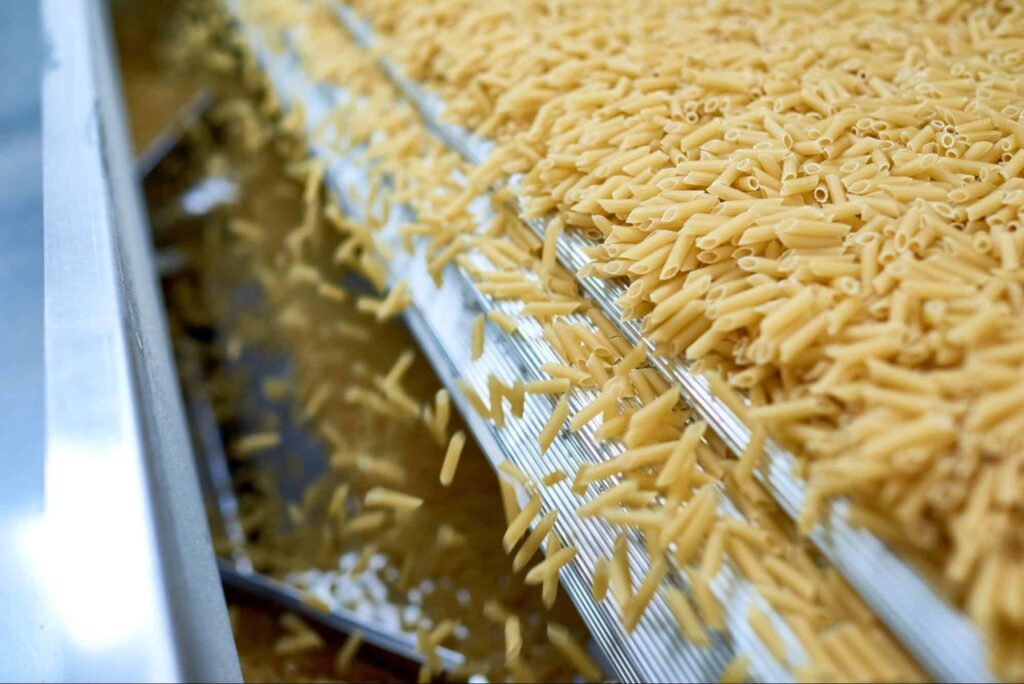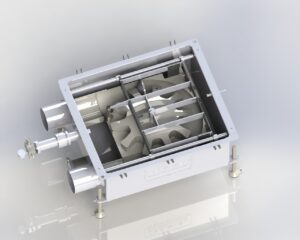In the food industry, a number of different methods can be used to move material from one point to another. But what are the sanitary standards for conveying in food processing? What precautions should food manufacturers take when using material handling systems? Keep reading to find the answers to these questions and learn which solutions are best for your application.
The Importance of Sanitation in Food Processing
In the United States, foodborne illnesses affect an estimated 48 million people each year. What’s more, around 128,000 of these cases are life-threatening or result in death. With figures like these being reported by the Center for Disease Control and Prevention (CDC), it is evident that keeping food safe has become one of our nation’s most important concerns. The FDA Food Safety and Modernization Act (FSMA) aims to protect the public by focusing on making food production safer.
What’s more, FSMA has introduced new legislation that will require specific preventative measures to be taken to avoid contamination events from occurring. The ultimate goal here is to shift from reacting to contamination events after they have occurred to being proactive in the prevention of these incidents from ever occurring. What this means is that food plants are now required by law to implement certain standards before material can be conveyed using conveyor belts or other automated conveyor systems.
Cleaning vs. Sanitation – What’s the Difference?
When talking about food processing conveyor solutions, it is important to make the distinction between cleaning and sanitation. By definition, cleaning refers to the process of removing certain types of dirt and debris from a conveyor belt system. If food bits or other items get stuck in cracks and crevices, you can clean them out using a high-pressure washer system (either air or water). This will essentially force contaminants away from the equipment without actually killing any pathogens on contact – you would be simply moving them to a different area.
Sanitation, on the other hand, kills microorganisms that may be living on the industrial conveyor systems. Sanitation will remove all organic matter from a surface while also killing off bacteria, molds, and other harmful organisms in the process.
When it comes to food safety requirements, food hygiene, and processing standards, conveyor systems must include both features. The equipment must be cleaned on a regular basis to ensure the safety of the product, but it also needs to incorporate sanitation measures at all times so as not to compromise food quality or safety in any way.
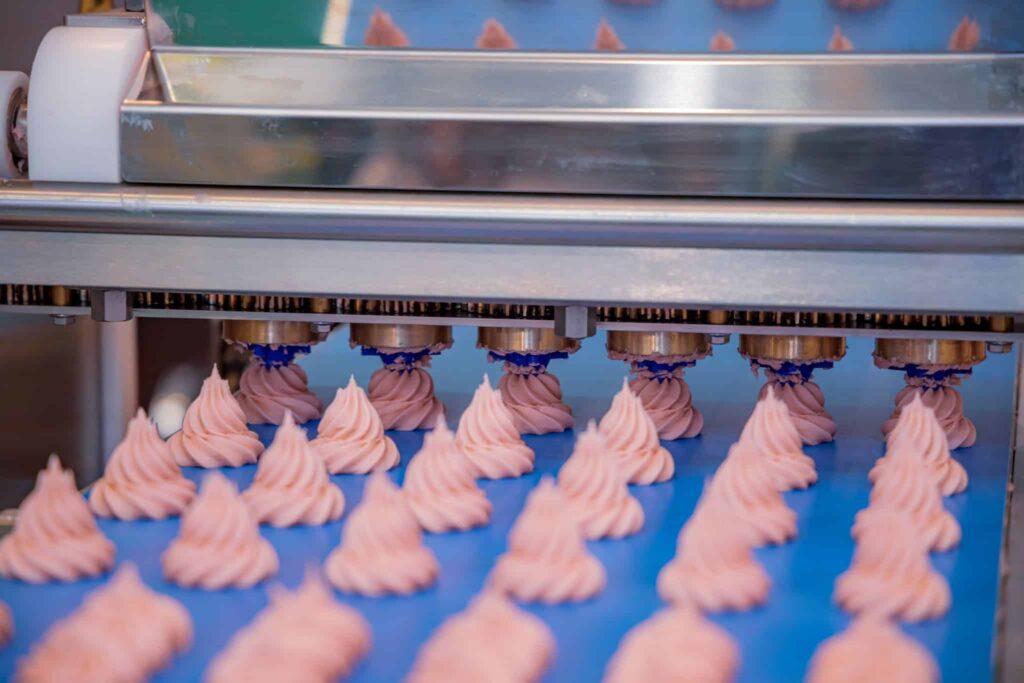
The Sanitary Standards for Conveying in Food Processing
The Food and Drug Administration (FDA) and the United States Department of Agriculture (USDA) have published comprehensive guidelines for conveying equipment across the food processing industry. These standards cover everything from the construction of conveyor systems to whether or not gloves are required for individual employees who will be working with food handling equipment regularly.
So, what are some of the specific requirements that must be met for conveyor technologies to pass FDA inspection? Let’s take a look at the requirements in greater detail, as well as some of the reasons why these standards are so crucial.
- Conveyors must be constructed free from cracks and crevices where the product can accumulate. Conveyor equipment should not have any openings or seams that might result in contamination or provide access for pest activity to occur.
- Conveyors should be made of smooth, easily cleaned, and sanitized materials. Conveyor belt systems must not present a tripping hazard for employees who are working in the area. If necessary, safety guards can be installed to avoid this problem.
- The FDA requires that food processing plants only use conveyor cleaners if they meet specific sanitary standards as well. What this means is that conveyor cleaners must be constructed from materials that are safe to come into contact with food.
- Conveyor cleaners should be used in a way that prevents them from coming into direct contact with products.
- Conveyor engineering must also incorporate features that will allow for thorough cleaning and sanitization of the equipment on an ongoing basis. This means conveyor systems must have spaces where products can fall through or be swept away during the cleaning process.
- Employees working with machinery need proper training when it comes to sanitation procedures and equipment.
- There are sanitary standards for conveying foods concerning temperature, humidity levels, and air pressure – all factors that can affect an item’s shelf life or freshness.
- Food-grade conveyor systems must be designed to accommodate the specific needs of different industries (agriculture, meat, poultry, bulk solids, frozen products, and many others) and their sorting process.
What You Need to Know About 3-A Sanitary Standards
The 3-A Sanitary Standards represent the guiding principles behind the design and fabrication of equipment that comes into direct contact with food. These are not regulatory standards but rather voluntary guidelines developed by industry experts for companies to follow when constructing conveyor systems in their factories or processing plants.
The primary goal of the 3-A Standards is to protect public health by adhering to the highest quality and safety standards. Companies should not simply aim to pass FDA inspection but rather strive for compliance with these voluntary guidelines at all times to ensure the best possible results when it comes to protecting employees and customers from contamination or employees from injury. There are over 70 different 3-A Sanitary Standards in these equipment categories:
- Cheese and butter equipment,
- Concentrating equipment,
- Conveyors and feeders,
- Farm/raw milk,
- Filters,
- Heat exchangers,
- Instruments,
- Valves and fittings,
- Vessels.
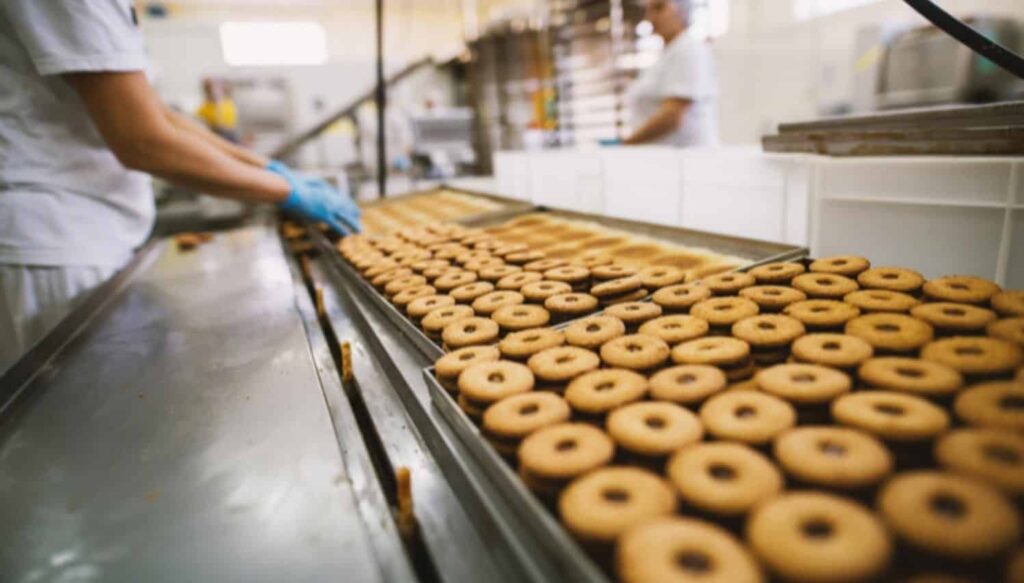
What Do 3-A Sanitary Standards Look Like in Practice? Let’s Take a Look at Some Examples
Food preparation and equipment are subjected to sanitary design and conveyor installation inspections. Regulators from the federal, state, and local levels conduct inspections regularly. 3-A Sanitary Standards and 3-A Accepted Practices are utilized as acceptable sanitary standards for dairy and food processing equipment.
These Standards and Practices have a long history of assisting state and federal regulatory authorities in their work. Furthermore, some state regulations have incorporated 3-A Standards. Here are a couple of example standards defined in 3-A Sanitary Standards.
Standards for Materials Used in Conveyor Construction
The materials section describes the criteria for the conveyor’s construction materials. The conveying system must be constructed with only safe, food-grade materials in order to pass inspection and achieve compliance with guidelines. In many cases, the material used will vary depending on whether or not the product comes into direct contact with it during use. Accepted materials must be non-toxic, non-flammable, and able to withstand exposure to food products as well as cleaning chemicals.
The 3-A Standards use AISI 300 Series Stainless Steel as a benchmark for many types of equipment due to its ability to withstand long-term use, corrosion resistance, and ease of cleaning. Metals that are not on the list of accepted materials are not allowed for use in food processing equipment. Non-metal components must also meet certain requirements outlined by the standards before they can be used to construct conveyors or other equipment. Rubber, plastics, rubber-like, and other synthetic materials are subject to several specific criteria.
The Criteria for Fabrication of the Equipment
Equipment fabrication and construction criteria are outlined in great detail across the 3-A Standards. The primary focus is on smooth, clean vertical and horizontal surfaces, which are easy to keep sanitary and safe from contamination. Manufacturing conveyor systems must be done so as not to create sharp corners or edges anywhere along the exterior surface.
Sanitation-related criteria include surface finish standards such as smoothness – the surface needs to be free of flaws like pits, folds, and crevices. There are also limitations in radii, drainage necessities, accessibility for cleaning and inspection, and design needs for the proposed cleaning technique, including clean-in-place (CIP), clean-out-of-place (COP), or manual cleaning.
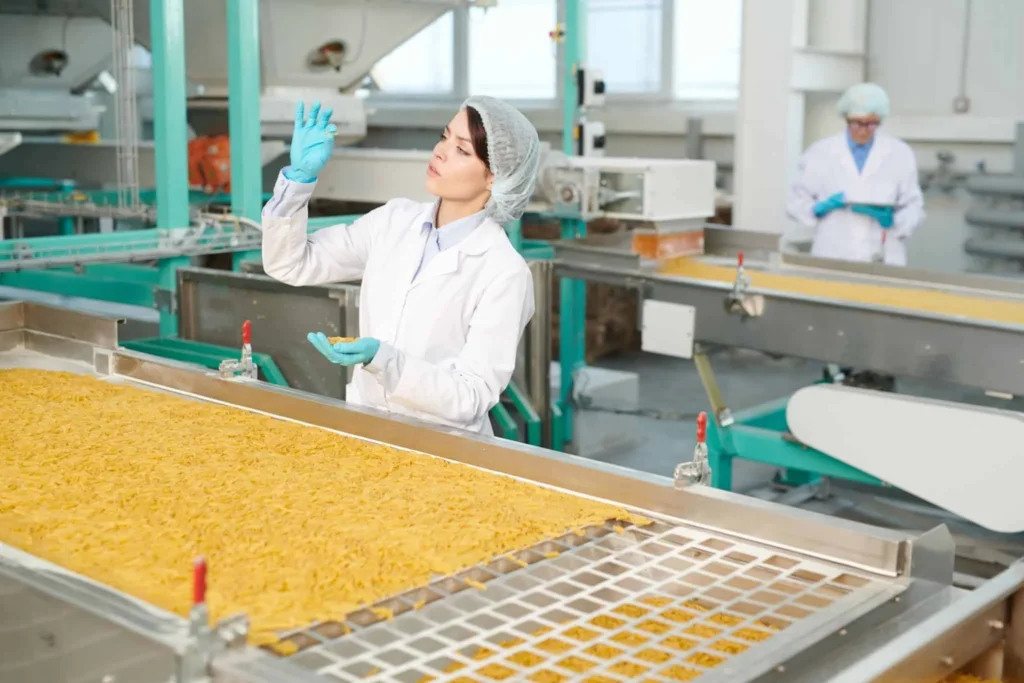
Contact Cablevey Conveyors for Top-Rated Conveyor Systems – Our Technology Can Help Improve Your Business
Cablevey Conveyors offers top-rated conveyor systems that can transform your business operations. Our cutting-edge conveyor technologies are designed to enhance efficiency, productivity, and profitability across various industries. We have a proven track record of delivering reliable and innovative conveyor solutions that meet your unique needs.
Our systems are engineered to streamline material handling processes, minimizing the risk of product damage. At Cablevey Conveyors, we prioritize customer satisfaction and long-term success. Our team of experts is ready to assist you in selecting the ideal conveyor system for your facilities. Contact us today, and let our technology empower your business to reach new heights of efficiency and profitability.
FAQ
What Are the Primary Sanitary Standards for Conveying in Food Processing?
The primary sanitary standards for conveying in food processing involve ensuring that conveyor systems are constructed in a way that prevents contamination and maintains cleanliness. This includes having conveyors free from cracks and crevices where food or debris can accumulate. Conveyor equipment should be made from smooth, easily cleaned, and sanitized materials. Additionally, there should be safety measures in place to avoid tripping hazards.
What Is the Difference Between Cleaning and Sanitation in Conveyor Systems?
Cleaning and sanitation in conveyor systems serve different purposes. Cleaning refers to the removal of dirt and debris from the conveyor system. It involves using high-pressure washers to force contaminants away from equipment. Sanitation, on the other hand, goes a step further by not only cleaning but also killing microorganisms like bacteria and molds on the equipment’s surface. Both cleaning and sanitation are crucial to maintaining food safety.
What Do the FDA and USDA Guidelines Cover for Conveyor Systems in the Food Processing Industry?
The FDA and USDA guidelines for conveyor systems in the food processing industry cover various aspects. These include the construction of conveyors, the use of materials that are safe for food contact, the prevention of direct contact with conveyor cleaners, employee training in sanitation procedures, and standards related to temperature, humidity, and air pressure for maintaining food freshness.
What Are the 3-A Sanitary Standards, and How Do They Relate to Conveyor Systems in Food Processing?
The 3-A Sanitary Standards are voluntary guidelines for equipment design in direct contact with food. They emphasize maintaining the highest quality and safety standards in the food processing industry. While not regulatory, adhering to these standards ensures the best possible protection against contamination and injury related to conveyor systems.
What Materials Are Accepted for Conveyor Construction According to the 3-A Standards?
According to the 3-A Standards, conveyor construction materials must be non-toxic, non-flammable, and capable of withstanding exposure to food products and cleaning chemicals. AISI 300 Series Stainless Steel is often considered a benchmark material due to its durability and ease of cleaning.
What Fabrication Criteria Are Outlined in 3-A Sanitary Standards for Conveyor Equipment?
Fabrication criteria in the 3-A Standards focus on creating smooth, clean surfaces in conveyor equipment. This includes avoiding sharp corners, ensuring accessibility for cleaning and inspection, and meeting specific design requirements for cleaning techniques like clean-in-place (CIP), clean-out-of-place (COP), or manual cleaning.

